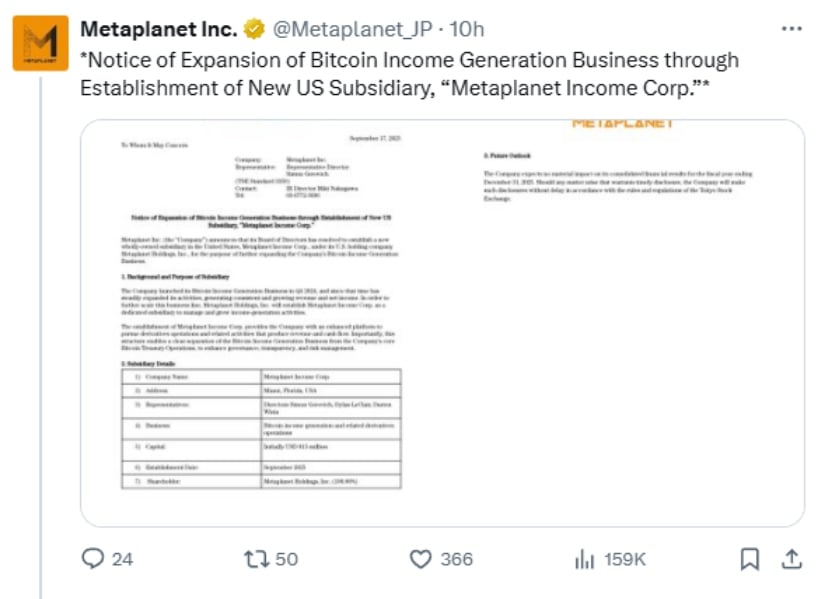Siemens Patent Mentions IOTA for Renewable Energy NFT Certificates
- Siemens has referenced IOTA as a solution for a computer-implemented method and system focused on temporal correlation.
- Recently, Echo Protocol launched a native Bitcoin bridge to the IOTA network, introducing the first native Bitcoin asset in the IOTA network.
A recent post on X by user Wonderer has drawn attention to a new patent from Siemens, the German multinational known for its work in industrial automation, digital industries, smart infrastructure, and mobility solutions.
The patent explicitly mentions IOTA, the decentralized ledger protocol built for secure, feeless, and scalable machine-to-machine transactions, especially within the Internet of Things (IoT), as a solution for advancing renewable energy certification.
According to Wonderer’s description, the patent refers to:
The patent goes on to explain that a data block doesn’t necessarily need to be a traditional blockchain block; it could also be a specific memory or address area within a distributed database. This opens the door for blockless distributed systems such as IOTA, IoT Chain (ITC), and Byteball, a DAG-based cryptocurrency, which handle data differently from standard blockchains.
In these systems, transactions themselves help secure and maintain the sequence of records, ensuring that data is stored in a tamper-proof, verifiable way without relying on conventional blockchain structures.
Why IOTA?
Instead of using a linear blockchain, IOTA is built on a directed acyclic graph (DAG) architecture called the Tangle. This unique structure gives IOTA several distinctive features. To issue a new transaction, a user must validate two previous transactions, rather than paying a fee to a miner. This makes microtransactions between machines and devices viable.
Also, as the network grows with more participants and transactions, it becomes faster and more secure. The transactions are processed in parallel instead of waiting in a queue. With this, IOTA is particularly well-suited for energy markets, where millions of small transactions, like kilowatt-hour certificates, need to be recorded efficiently.
The use of NFTs in this context is not about digital art but rather as unique, verifiable digital certificates. Each one could be timestamped and linked directly to its source, whether that’s a solar farm or a wind turbine. The idea is that these certificates show when energy was produced, when and where it came from.
And once a certificate has been claimed, it’s automatically devalued, preventing any chance of reuse or double-counting, a vital safeguard for both regulatory compliance and carbon markets.
In other news, CNF confirmed that Echo Protocol, a DeFi platform built on the Aptos blockchain, has launched a native Bitcoin bridge into the IOTA network. As part of the integration, Echo introduced iBTC, the first native Bitcoin asset in IOTA that users can mint in the IOTA vault by bridging assets like native BTC, liquid staking tokens, and wrapped Bitcoin directly onto IOTA.
IOTA has slipped about 3% over the past week, but it’s still up more than 50% over the past year. Right now, IOTA is trading around $0.19, with daily trading volume dropping 15% to $220M and its market cap sitting near $774M.
Vous aimerez peut-être aussi

Tokyo Fashion Brand Expands Into Bitcoin and AI

Japanese Bitcoin Giant Metaplanet Raises $1.4 Billion to Enter U.S. Market
